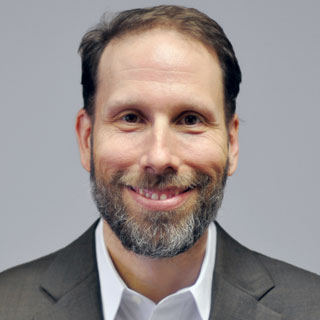
I’m a family physician working in Camden, NJ — one of America’s poorest cities. For the last 13 years, I’ve been building a citywide non-profit organization called the Camden Coalition of Healthcare Providers. We’re working to improve care for our communities’ most complex patients.
Primary care providers run from room-to-room in meaningless 15-minute visits that can’t possibly serve the needs of the sickest patients. It’s not uncommon for patients with addiction, mental health, and homelessness to pass from system to system without receiving high quality care that addresses all their needs. We don’t integrate these services; they are underfunded and underperforming; and the providers that work in these systems have often fallen behind the most cutting-edge, evidence-based models.
The long-term care industry has a window into mental health, substance abuse, and medical complexity amongst some of our nation’s seniors. Like colleagues in primary care, long-term care providers are struggling to care for patients with increasingly complex needs. According to AARP, more than 70 million Americans ages 50 and older suffer from at least one chronic condition. Some struggle with severed and tumultuous relationships with children, or financial hardship. With 85 million baby boomers in the midst of retiring, the challenges and costs of long-term care will only continue to accelerate.
Our work at the Camden Coalition started when we discovered that 20% of patients accounted for 80% of hospital costs in Camden due to disorganized care. One patient had been to the emergency department 113 times in a single year; another made 324 emergency visits over the course of five years.
We borrowed ideas from Police Commissioner William Bratton in New York City and his reform of the New York City Police Department, which used real-time crime data to target police services and reduce rates of crime to some of the lowest in the world. Inspired by Bratton’s management and data model, the Camden Coalition of Healthcare Providers invented the concept of healthcare hotspotting: the strategic use of data to target services to the most complex patients.
Patients experience super-utilization — extreme and inefficient medical treatment, whether through repeated hospitalization or frequent emergency room visits, without a corresponding improvement in health —b ecause of a mismatch between the needs of the patient and the type of services that the system provides. Patients are getting lost in an expensive, complex, and poorly constructed healthcare system.
We have learned that super-utilization is a multi-layered problem that defies simplistic solutions. Our 13 years of work has been a journey and exploration to deeply understand the problem we’re trying to solve, which included four major layers of attempted solutions:
- Focus on engagement, coordination, navigation, accompaniment, activation, and education. We had success with some patients but many continued to experience super-utilization.
- Build coalitions, share data, reconnect to primary care, and pursue payment reforms. While successful for some patients, others continued to experience super-utilization.
- Address failures in the primary care, mental health, addiction, and homelessness systems. These systems have gradually grown obsolete, isolated, and disconnected; they are failing to serve the most complex, multi-morbid patients with needs that span multiple systems.
- Interview our patients using techniques from anthropology and sociology to search for the deepest answers.
We assumed our patients knew the answer, even if we didn’t, and published two research papers from this work: Generating Hypotheses About Care Needs of High Utilizers: Lessons from Patient Interviews and The Core of Care Management: The Role of Authentic Relationships in Caring for Patients with Frequent Hospitalizations.
The interviews led us into a body of literature on adverse childhood experiences first published in 1998 by Vincent Felitti and his colleagues. Felitti demonstrated that the number of adverse childhood events (i.e., death of a parent, physical or sexual abuse, maltreatment, ridicule, and neglect) are powerful predictors for excess healthcare utilization, poorly controlled chronic illness, substance/alcohol abuse, and obesity. This work has been extended to show relationships to teen birth and chronic homelessness. In short, the things that happen to us in childhood have lifelong health and social consequences.
Felitti and others are proposing a shift in our language and our approach to these patients: instead of asking our most challenging patients “what’s the matter with you?” asking them in a meaningful and supportive way, “what happened to you?” Like an invisible malady, early life trauma will impact patients throughout their lifetime. Systems of care need to be aware and adapt to the special needs of older patients who have experienced early life trauma. There is training available for staff and leaders of long-term care systems in trauma-informed care.
Along with The Atlantic Philanthropies, Robert Wood Johnson Foundation, and AARP, we recently announced the creation of a national center to build the field and movement to support improvements to the care of the most complex patients. We plan to bring together front-line providers, healthcare educators and students, model-builders, data scientists, and policy makers to build this national center, collect learnings, and teach others how to incorporate this knowledge base into their practice. Our goal is to ensure that all healthcare providers — whether long-term care, primary care, acute care, or in other settings — are equipped to meet their patients’ needs. As we develop and launch the center, we need the perspectives and knowledge from diverse clinicians and providers, including those in long-term care. Together, we can bend the cost curve while improving quality of care and patients’ well-being.
Jeffrey Brenner, MD, is a primary care physician in Camden, NJ, and the executive director of the Camden Coalition of Healthcare Providers.




